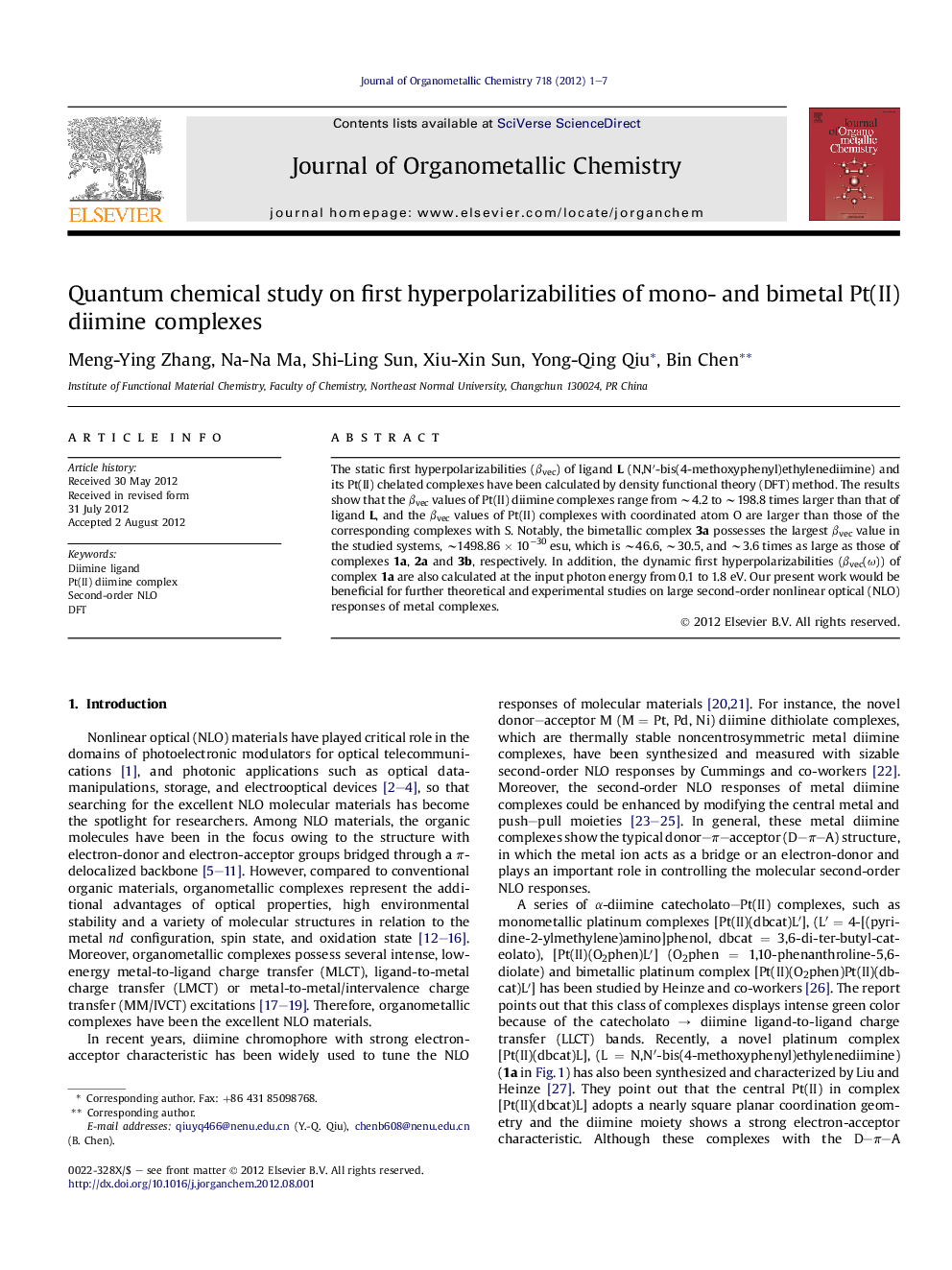| Article ID | Journal | Published Year | Pages | File Type |
|---|---|---|---|---|
| 1323040 | Journal of Organometallic Chemistry | 2012 | 7 Pages |
The static first hyperpolarizabilities (βvec) of ligand L (N,N′-bis(4-methoxyphenyl)ethylenediimine) and its Pt(II) chelated complexes have been calculated by density functional theory (DFT) method. The results show that the βvec values of Pt(II) diimine complexes range from ∼4.2 to ∼198.8 times larger than that of ligand L, and the βvec values of Pt(II) complexes with coordinated atom O are larger than those of the corresponding complexes with S. Notably, the bimetallic complex 3a possesses the largest βvec value in the studied systems, ∼1498.86 × 10−30 esu, which is ∼46.6, ∼30.5, and ∼3.6 times as large as those of complexes 1a, 2a and 3b, respectively. In addition, the dynamic first hyperpolarizabilities (βvec(ω)) of complex 1a are also calculated at the input photon energy from 0.1 to 1.8 eV. Our present work would be beneficial for further theoretical and experimental studies on large second-order nonlinear optical (NLO) responses of metal complexes.
Graphical abstractThe second-order nonlinear optical (NLO) properties on ligand L (N,N′-bis(4-methoxyphenyl)ethylenediimine) and its Pt(II) chelated complexes have been calculated by density functional theory (DFT) method. The static first hyperpolarizabilities (βvec) of the studied systems increase obviously with the increasing the π-conjugated groups and the number of Pt(II).Figure optionsDownload full-size imageDownload as PowerPoint slideHighlights► βvec value increases with the increasing π-conjugated groups and the number of Pt(II). ► Coordinated atom (X = O, S) affects the βvec values of the studied complexes. ► βvec(ω) value of complex 1a can be measured at the region ranging from 0.0 to 0.7 eV.
